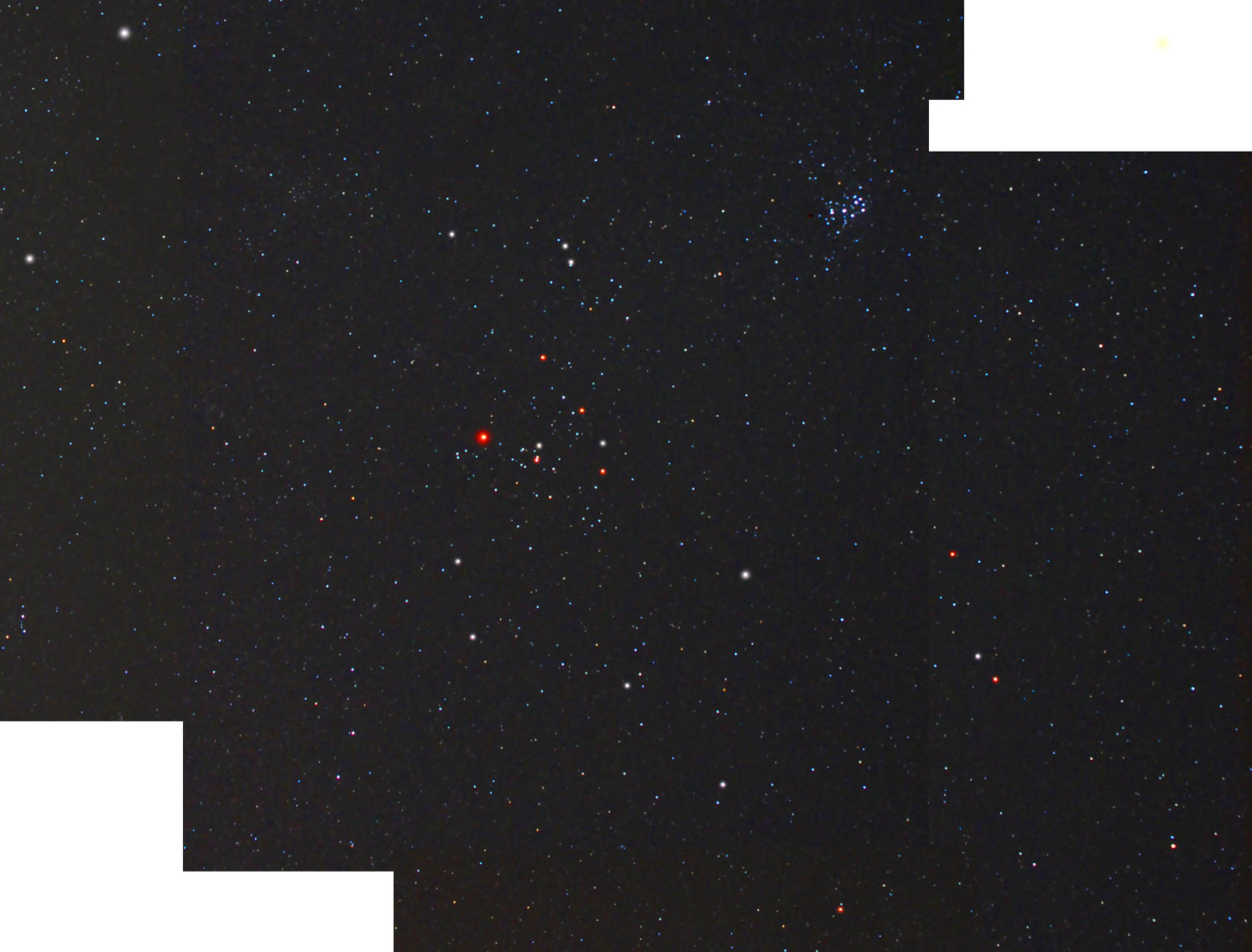Taurus
Taurus, The Bull, is a large and easily recognized winter constellation due to its being the host of the Pleiades star cluster and the bright star Aldebaran. The Bull, supposedly, is Zeus in disguise, swimming through the Hellespont to fetch his girl friend Europal his hind quarters are dim because they are submerged.
Aldebaran is a type K red giant star, 44 times the size of our sun and 150 times as luminous, lying 65 light years from Earth.
Although it resides in the same part of the sky as the Hyades star cluster, it is not a member of that group, which is nearly twice as distant, being 153 light years away. The Hyades cluster is about 625 million years old, contains several hundred stars, and is the closest open cluster to our solar system. The cluster's four brightest members are all red giants and can be seen on my photo below. The other well-known open cluster in Taurus is the Pleiades which forms the tip of the Bull's right horn. The Pleiades, also known as Messier 45, is much younger, having formed only about 100 million years ago. The cluster contains at least 1000 stars and 6 or 7 of these are bright enough to be seen with the naked eye under dark skies. Long exposure photographs reveal a dust cloud that the cluster is passing through, reflecting blue light from the hot blue stars that exist there, although the cluster also contains a large number of small dwarf stars, some of which are brown dwarfs with masses less than 8% of our sun. Alnath, the second brightest star in Tauus, is a type B giant with 4 1/2 times the sun's mass and is 700 times as luminous, lying about 131 light years from Earth.
 |